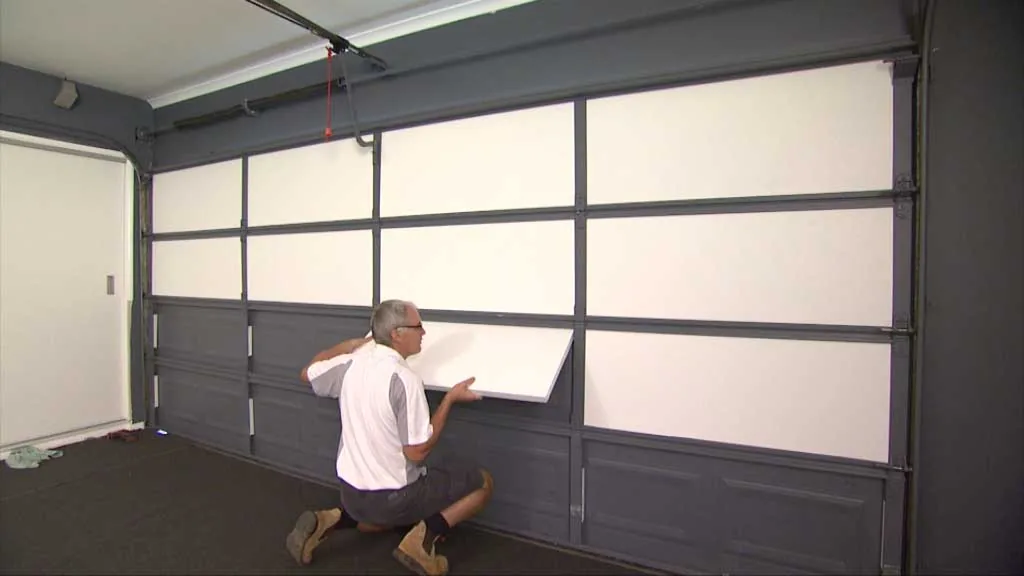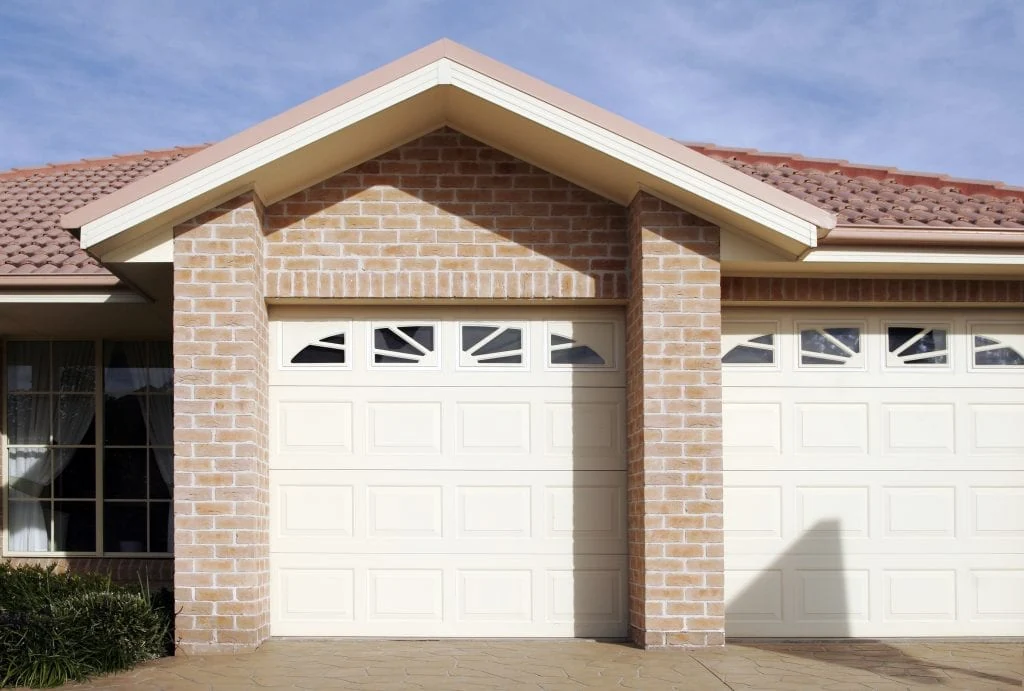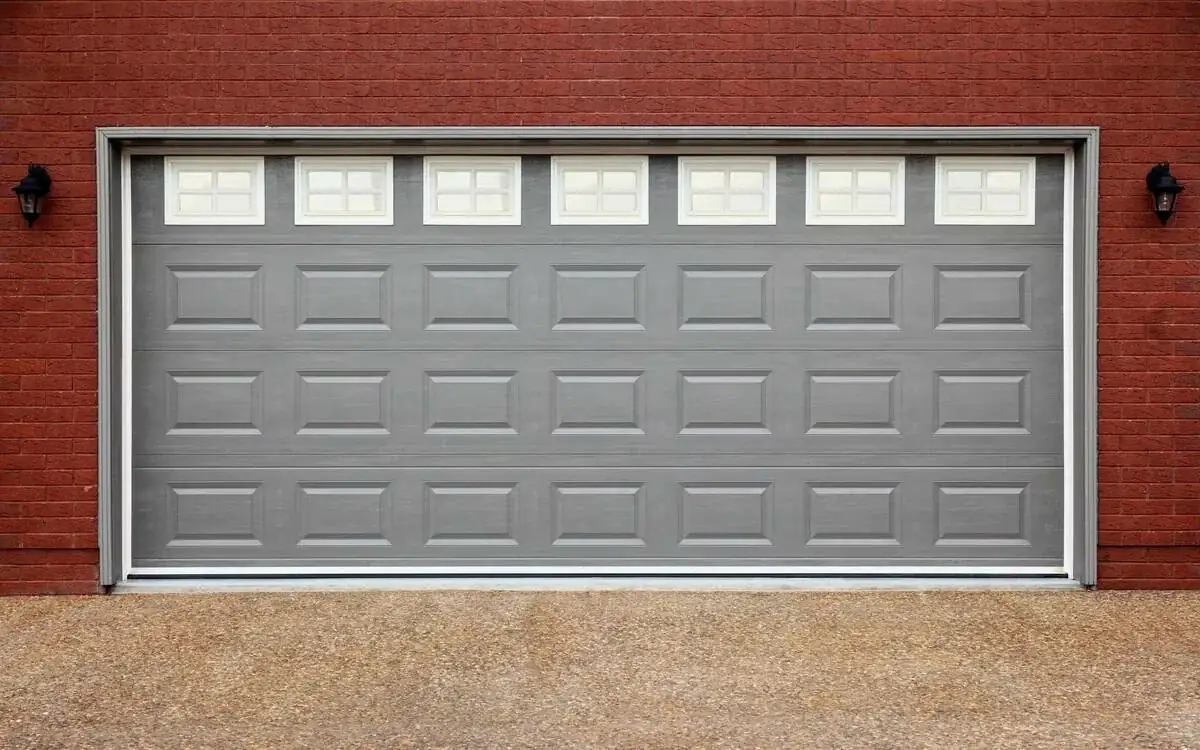Garage door insulation is something many people forget about, but it is very important. It helps control the temperature in your garage and in turn in your home. Insulate garage door creates a barrier against heat transfer.
This means it can lower the workload on your heating and cooling systems. As a result, you can enjoy better energy efficiency and comfort.
Key Takeaways
- Insulate garage door reduces energy bills and protects belongings.
- Properly installed insulation minimizes heat transfer, keeping your garage warmer in winter and cooler in summer.
- Choose an insulation type and R-value appropriate for your garage’s use and climate.
- DIY installation is achievable with the right tools, materials, and guidance.
- Enhance insulation effectiveness by sealing gaps and cracks around the door.
Understanding Insulate Garage Door Benefits

A properly insulated garage has many benefits aside from keeping the temperature stable. It helps protect your items from extreme heat or cold, reduces outside noise, and can even help your garage door opener last longer.
No matter if you use your garage as a workshop, storage area, or a home gym, insulation makes it a more pleasant and useful space all year long.
1. The Importance of Insulate Garage Door
Your garage door can lose a lot of heat in the winter and gain heat in the summer. Standard insulate garage doors are often made of thin materials that do not block heat well.
When you add insulate garage door, you create a barrier. This barrier slows down heat transfer. It helps keep your garage warm in the winter and cool in the summer, reducing the stress on your home’s heating and cooling systems.
Insulating your garage door can also help reduce noise from the street or your neighbors. This is really helpful if you live on a busy road or have a car garage next to your home. Keep in mind that putting insulate garage door will make it heavier and may need you to adjust your garage door springs.
2. How Insulation Affects Energy Efficiency in Your Home
Insulating your garage door is a smart and affordable way to make your home more energy efficient. It limits heat transfer between your garage and living spaces. This helps your heating and cooling systems work less.
When your HVAC system has to work less, it uses less energy, which means lower energy bills. The amount you save can change based on your local climate, the insulation you already have, and how often you use your garage.
Even small gains in energy efficiency can add up to big savings over time. This makes adding insulation a good choice for any homeowner.
Preparing for Insulate Garage Door

Before you insulate your garage door, check its structure. Look for gaps or areas that need help. Measure the size carefully to figure out how much insulation you will need. Pick the best type of insulation based on what your garage requires, like foam, vinyl, or fiberglass. Make sure the bottom of the door is sealed well to stop heat transfer and reduce outside noise. Get the right tools, like fasteners and double-sided tape, to secure the insulation properly.
3. Tools and Materials You Will Need
It is important to have the right tools and materials ready before you start your project. This way, your work will go smoother and quicker. Here’s what you will need:
Tools:
- Tape measure
- Utility knife
- Safety glasses
- Work gloves
- Straight edge or level
Materials:
- Garage door insulation kit (this usually includes insulation panels, adhesive tape, and retaining clips)
- Caulking gun and sealant (optional, to seal gaps around the door frame)
4. Measuring Your Garage Door for Insulation

Getting the right measurements is very important for fitting insulation well. First, measure the width and height of each panel on your garage door. Don’t forget to note any items that might get in the way, like hinges or handles.
Think about the type of garage you have. If it is a standard garage with a sectional door, your measurements will help decide the size of the insulation panels needed.
Make sure to measure from the bottom of one panel to the bottom of the next panel, not just the front of the panel. Also, remember any tracks or other parts at the top of the door while measuring.
Step-by-Step Guide to Insulating Your Garage Door
Once you have all your tools and materials ready, follow these steps to install efficiently:
First, clean the surface of your garage door panels. This helps the insulation stick better. Then, cut the insulation panels based on the measurements you took. Leave a small space for adjustments.
5. Choosing the Right Type of Insulation Material
Choosing the right type of insulation is very important for getting good results. Common types of garage door insulate are foam panels, reflective insulation, and fiberglass batts.
Foam panels are usually made of polystyrene or polyurethane. They are known for being easy to install and not too costly. Reflective insulation has a shiny layer that reflects heat away. It also has a layer of bubbles or foam behind it.
Each insulation type has its own advantages and disadvantages. Think about your budget, the climate where you live, the R-value you want, and how easy it is to install. If needed, talk to a professional for help in picking the best choice for your garage door insulation needs.
6. Cutting and Fitting Insulation Panels

Accurate cutting and fitting are important for good insulation performance. Use a sharp utility knife and a straight edge to cut the insulation panels based on your measurements. Always wear safety glasses and gloves when using sharp tools and handling insulation materials.
To get a snug fit, trim small pieces gradually. This helps the insulation rest flat against the garage door panels without gaps or overlaps. Check the fit again before securing the insulation. This will help avoid air leaks and make sure it works well.
7. Securing Insulation in Place
After carefully cutting and fitting each insulation panel, the next step is to secure them to the garage door. Most types of insulation, like foam panels, use double-sided tape made for this job.
This adhesive tape keeps them in place and avoids using fasteners that might damage the door. You should apply the tape to the back of the insulation panels, pressing down to make sure they stick well.
Some kits may come with special fasteners or clips. Be careful with the type of door you have. Avoid using fasteners that could weaken it or let moisture get in.
Tips for Maximizing Garage Door Insulation Effectiveness
Properly installing insulation is very important. However, there are more things you can do to make it even better.
Start by sealing any gaps or cracks around the garage door frame. You can use weather stripping or sealant. These small openings can affect temperature control a lot. It is important to fix them to get the best results.
8. Sealing Gaps and Cracks Around the Garage Door
Even with insulation installed, small gaps and cracks around the garage door frame can lessen its effectiveness. These openings can let air in, making the insulation work less well.
Check the edges of the door closely. Look at the frame, trim, and bottom seal. Use a good sealant or weatherstripping to fill these gaps. This will stop unwanted air from coming in.
By sealing these weak spots, you will improve insulation, save energy, and make your garage more comfortable. Make sure to pick a sealant that matches your door material and works well with your local weather.
9. Additional Measures to Enhance Insulation

To make your garage more energy-efficient, think about these extra steps beyond just insulating the garage door:
- Insulate the walls and ceiling: Putting insulation in the outer walls and ceiling can really boost how well your garage keeps the temperature steady.
- Install a door sweep: Adding a door sweep at the bottom of the door can close the gap and stop drafts from coming in.
- Consider a garage door blanket: A garage door blanket works well as an extra layer of insulation. It’s great for older doors or ones that have big gaps.
Keep in mind that adding insulation, especially to the garage door, will make it heavier. It’s a good idea to talk to a professional to see if your garage door springs need to be adjusted due to the added weight.
Conclusion
To keep energy costs low and make your garage comfortable, it’s important to insulate garage door. You can lower energy bills and improve how your garage door works by following the steps given and picking the right insulation material.
Make sure to seal any gaps and cracks for the best results. Whether you choose to insulate it yourself or get help from a pro, insulating your garage door is a good investment that will benefit you in the future. Start taking steps today to enjoy a better, energy-efficient garage.
Frequently Asked Questions
1. Can I insulate a garage door myself?
Yes, insulating a garage door is a project that’s great for do-it-yourselfers. You can use a garage door insulation kit and a few simple tools. This way, you can insulate your door by yourself with ease.
2. What is the best insulation material for a garage door?
The best insulation material for your garage door depends on your budget and the weather in your area. Foam insulation panels are popular. They are effective, easy to install, and affordable.
3. How much can I save on energy bills by insulating my garage door?
Insulating your garage door can save you money on heating and cooling costs. Although savings may differ, this simple step helps improve energy efficiency and can be a smart choice for your budget.
4. Does insulating a garage door improve its operation?
An insulated garage door usually works quieter and smoother. This happens because the insulation adds weight and helps reduce sound.
5. Can insulation be added to any type of garage door?
Most garage doors can be insulated. However, it is good to check with the manufacturer or a professional. They can help you make sure it will work well and find the best way to insulate your specific door type.
6. Is it a good idea to insulate garage door?
Insulating your garage door is smart. It helps control the temperature and can lower your energy bills. It also cuts down on noise. Plus, it keeps moisture from causing problems and makes your garage more comfortable.
7. What is the best way to insulate a garage?
The best way to insulate a garage is to cover all parts. This means insulating the walls, the ceiling, and the garage door. Doing this will give you the best results.
8. What is an insulated garage door?
An insulated garage door has insulation built inside it, usually in the door panels. This helps reduce heat transfer and makes it more energy-efficient.

